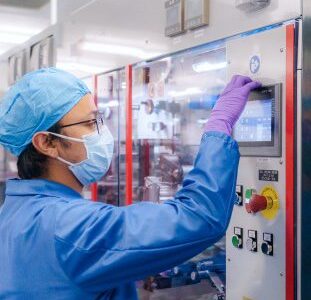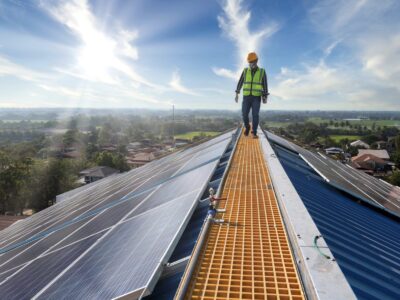As urgency around changes to the environment becomes a significant point of discussion in today’s politics, leaders worldwide are beginning to look at various carbon-emitting industries with a fine-toothed comb. A comprehensive solution will require cooperation from major forces in sectors like transportation and energy. However, one industry has only recently been the hot subject of sustainability discourse in the eyes of the general public.
Construction is responsible for anywhere between 8-11% of global carbon emissions, primarily due to the high level of carbon output over the lifetime use of common building materials. More states are adopting legislation like California’s “Buy Clean” bill, which introduces new regulations for developers based on the lifetime carbon footprint of their construction materials. Municipalities are starting to ask themselves how to make the building process more sustainable.
Thankfully, there are solutions for developers looking to source cleaner materials for their projects. One exciting company is Brimstone Energy, a promising startup founded to develop an environmentally safe cement alternative. As of 2018, cement alone was responsible for the vast majority of emissions related to building materials and roughly 8% of carbon emissions worldwide.
The unending growth of the real estate sector has led to more buildings being built every year, with the demand for cement rising along with it. When Brimstone co-founders Cody Finke and Hugo Leandri first sat down in 2017, they agreed that a good way to address this problem would be to replace cement with an alternative that could last well into the carbon-zero era soon to come.
Brimstone’s core philosophy is flipping the conventional cement production method on its head. Cement is normally made by heating limestone, which is high in emissions because it releases carbon from heat exposure. Manufacturers have attempted a type of carbon neutrality that covers the entire process by relying on large-scale carbon capture and storage investments. While those technologies are effective at keeping the carbon from the atmosphere, they only provide a band-aid fix and lack long-term sustainability as the cost of storing carbon increases.
Finke and Leandri wanted to avoid this dilemma by opting for a different starting mineral. Instead of limestone, they used calcium silicate and a leaching agent. Using this mineral is a significant upgrade from the traditional limestone method, where companies spend massive amounts of resources.
Brimstone’s use of calcium silicate is more sustainable in the long term because it makes up around 50% of the planet’s crust. It’s all done without the carbon-intensive heating process and the resulting emissions.
In addition, Brimstone’s chemical mixing process, which turns cement into concrete, produces magnesium as a byproduct. Magnesium reacts with carbon dioxide by turning it into solid rock, thus making Brimstone’s overall cement technique a net negative on the atmosphere’s carbon content. It is so efficient that it keeps its carbon-negative status when fossil fuels are used for calcium silicate production. While Brimstone maintains it would rather use clean heat energy, being able to counteract the environmental shortcomings of a readily available power source is a major benefit for this technology. It will also be applicable at scale within the next few years.





